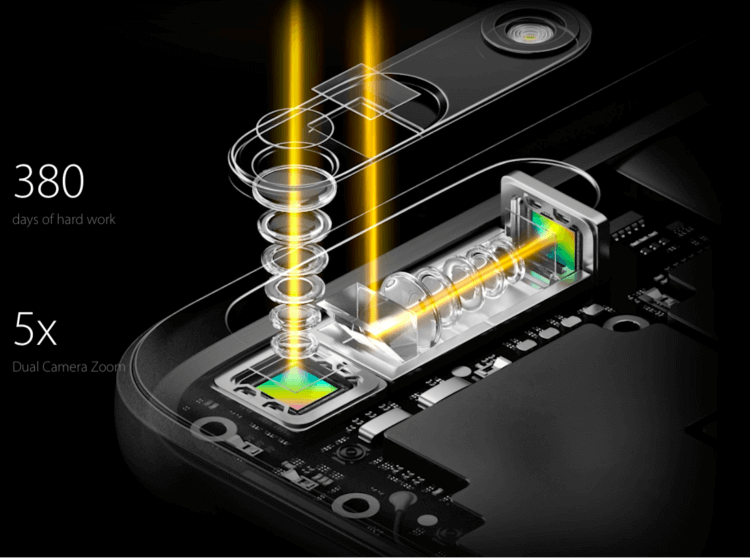Yesterday at the Galaxy Unpacked 2020 presentation, Samsung unveiled a new generation of flagships Galaxy S20, Galaxy S20 + and Galaxy S20 Ultra. The most technologically advanced S20 Ultra has a 100x Space Zoom camera for photography and video shooting. How did the Koreans manage to do this and is there more to it than just marketing? Today we will try to answer these questions.

What is the Samsung Galaxy S20 Ultra periscope camera capable of?
If you look at examples on the web, you can understand that 100x is more marketing, as the picture in this mode is too blurry, but when it comes to 10x and even 50x zoom, the phone's camera capabilities really attract attention.

Of the entire line, only the Ultra is equipped with such a camera, and we are talking about a 48-megapixel periscope module. It allows you to get a 4x zoom in hardware. Samsung further offers a 10x zoom without any loss in quality thanks to its Hybrid Optic Zoom technology. Subsequent approximation occurs due to image zooming and subsequent neural network processing to smooth the corners of objects.
Before the Galaxy S20 Ultra, there were already phones on the market that could zoom in up to 50x, for example, Huawei P30 Pro with the same periscope camera.
What is a periscope camera?
This is a camera that is located along the entire body. It looks like this inside:

What does a periscope camera look like from the inside?
Due to glass, the image from the lenses is projected onto the matrix, which is located perpendicularly, this allows you to install more lenses and make the approximation effective.
Israel's Corephotonics is currently manufacturing the periscope camera. Oppo was the first to ask her for help. Guys from Huawei came for help and now Samsung is also using the Corephotonics periscope camera.
At 100x zoom, Samsung also uses a 108MP module, which provides more information about the scene and improves the quality of the result. What is “Space Zoom”? This is a combination and neural network enhancement of images from two modules – a 48-megapixel periscope and a 108-megapixel main one.
The Galaxy S20 Ultra uses 4 main sensors in total: 108MP main module with f / 1.8 aperture and OIS, 48MP module with 10x zoom and OIS, 12MP wide-angle camera with 120-degree field of view, and ToF – depth camera. The front camera in the device is 40 megapixels with phase detection autofocus.
The Xiaomi Mi Note 10 can become a direct competitor to the phone, it is also equipped with a 108-megapixel module and demonstrates good results in low light.
How else can manufacturers improve cameras?
If you compare the photo and video quality of the Galaxy S10, for example, with iPhone 11 or Pixel 4, you will not notice much difference, simply because today the photo quality has become so good that all subsequent improvements look minor. It always turns out that 90% of the time manufacturers will spend on bringing the camera to perfect condition. Today it is already difficult to come up with something revolutionary in this matter. You can only make the modules and camera sensors themselves more massive, but this will undoubtedly entail an increase in the size of the camera rim and the width of the device. Remember professional cameras that served as smartphones? In the near future, it seems to me, the same thing awaits us.
I'm not the first to call today's smartphones rather cameras with a call function. Manufacturers try, of course, to minimize the size of the modules and at the same time to obtain the maximum quality, but every year it will become more and more difficult due to the fact that the leap in the development of neural networks has already been passed and it was they who allowed at one time to significantly improve photographs, then we rest into hardware limitations.
It is interesting to know what you think about this. Did you like the 100x camera of the new Galaxy? Share your opinion in the comments and don't forget about our Telegram chat.
